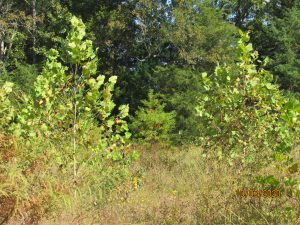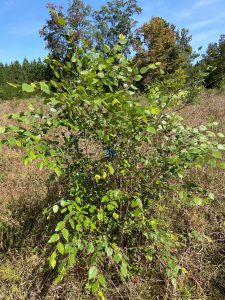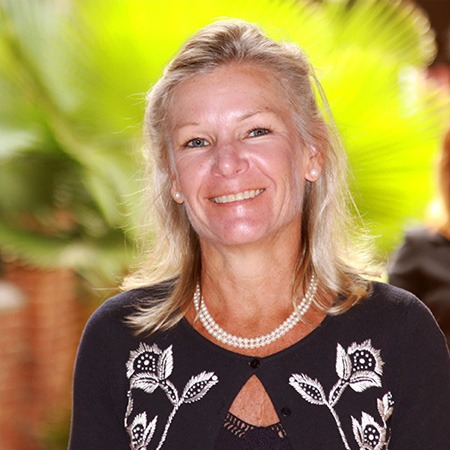Whether it’s a riverbank restoration project or your own backyard, these are the wetland trees we recommend.
By Rich Mogensen, PWS (Posted January 5, 2021)
For those of us who are fortunate to work in the environmental restoration industry, we know the pros and cons of the various species of trees used in stream and wetland restoration projects. The only way to gain this knowledge is to plant tens of thousands of trees and see what happens.
SynTerra scientists have done just that.
Here are SynTerra’s recommendations for the wetland tree species that are ideally suited for ecological restoration projects or for just planting in the wet places in your backyard. (Note: All trees below are native to the southeastern United States.)

Sycamore black willows on a SynTerra site.
Black Willow (Salix nigra) – This species is one of the most common wetland trees in the southeastern U.S. and is a go-to choice for stream restoration projects. The black willow can be planted along stream banks or in any old wet area. The amazing thing about this tree is its ability to reproduce from live stakes, tree branches that can be planted in the soil and which will grow into full trees.
In the case of the black willow, its branches can be cut into live stakes that are 1 inch to 2 inches in diameter, 3 feet to 4 feet long, and stripped of their leaves and jammed into the ground. Most of the time, the stick will turn into a new willow tree. Planting live stakes is particularly handy when stabilizing bare stream banks quickly. At SynTerra, we use black willow live stakes on nearly every stream restoration project.
The only other tree we recommend for live stakes is the silky dogwood (Cornus amomum). Elderberry (Sambucus canadensis) is a shrub that can work from live stakes if treated and installed correctly.
Bald Cypress (Taxodium distichum) – The bald cypress tolerates permanently standing water, but it also does well in your backyard. In fact, you can plant bald cypress trees just about anywhere, as long as you water them in the hot summer months. These are attractive, hardy trees, and they tolerate many environmental conditions. They are also one of the few needle-leaved, deciduous trees, meaning they drop their needles in the winter, hence the name “bald.”
When grown in standing water, this tree species uses anatomical adaptations, including buttressed tree trunks and cypress knees. These little knobby knees allow the trees to get enough oxygen while sitting in permanently standing water or saturated soils.
The bald cypress grows only south of the Mason-Dixon Line, so you can’t use them for wetland restoration projects in the northeastern states.
American Sycamore (Platanus occidentalis) – The majestic American sycamore is easy to identify and easy to find in local nurseries. It’s also hardy.
American sycamores grow up to 100 feet tall and 100 feet wide. This giant lives a long life along the riverbank. They are often found on golf courses and greenways, too. When fully grown, these widely branching trees feature large, prominent leaves and distinctive bark. The bark looks like it is peeling off and is often multicolored. The bark looks almost like it is diseased or sick, which provides a clue to identifying them. The seeds are round, green balls that droop off the branches in the fall.
Although these trees do not propagate from live stakes, they can re-sprout from beavers or axes.
These trees can take a fair amount of abuse during their propagation and planting before they become the statuesque beauties they are destined to be.

River birch on a SynTerra site.
River Birch (Betula nigra) – A favorite of many restoration practitioners, the hardy, attractive river birch often has multiple trunks and sports thin, wispy bark like a paper birch. They can take wet conditions but are often used for landscaping trees in residential neighborhoods.
This is a blessing and a curse. If they are in your neighbor’s yard, they are a blessing. If they are in your yard, they are a curse! The reason: They are pretty trees, but they drop copious amounts of twigs and branches throughout the year. If you have one in your yard, you know what we mean.
When used in restoration projects, the river birch can grow in wet or dry conditions. At SynTerra, we use the river birch in a number of different situations, such as riparian zones, flood plains, and forested wetlands.
The river birch should be a strong choice when considering tree species, especially in wetter environments such as flood plains and streambanks.
Various Oaks (Quercus spp.) – Oak trees are excellent choices for environmental restoration projects, as well as for your backyard. Oak trees — such as the willow oak (Q. phellos), water oak (Q. nigra), southern red oak (Q. falcata), swamp white oak (Q. bicolor), swamp chestnut oak (Q. michauxii), shumard oak (Q. shumardii), overcup oak (Q. pagoda), and laurel oak (Q. laurifolia) — are slow-growing trees with great habitat features, like producing acorns for wildlife and providing ample shade.
The oaks that tolerate wet conditions the best are the swamp white oak, swamp chestnut oak, and willow oak. Oaks are desirable trees, but one must be patient — they can take decades to grow taller than a shrub.
Red Maple (Acer rubrum) vs. Green Ash (Fraxinus pennsylvanica) – Both the red maple and the green ash are two native, hardwood trees that are suited to wetland environments. Both the red maple and the green ash are pioneer species, which means they will often begin growing in an environment without being planted.
At SynTerra, we like the red maple for its variability, hardiness, rapid growth, and pretty colors. Green ash, unfortunately, is subject to a nasty little critter called the emerald ash borer.
Originating in southeast Asia, the emerald ash borer is decimating green ash trees throughout the southeastern U.S. They have infested every county in North Carolina and many counties in Virginia and South Carolina. The emerald ash borer goes after only mature ash trees with trunks greater than 3 inches in diameter. The hopes are that this pest will move on after all the mature green ash trees are dead and that the next generation of ash trees will not be affected by this invasive, destructive, bark-burrowing beetle.
There are so many other selections that we can’t include them all. Others to consider include the American elm (Ulmus americana), sweet bay magnolia (Magnolia virginiana), black gum (Nyssa sylvatica), swamp tupelo (Nyssa aquatica), persimmon (Diospyros virginiana), paw paw (Asimina triloba), musclewood (Carpinus caroliniana), buttonbush (Cephalanthus occidentalis), silky dogwood (Cornus amomum), and the loblolly pine (Pinus teada).
For more information on wetland restorations, contact SynTerra Ecological Restoration Program Manager, Rich Mogensen.






